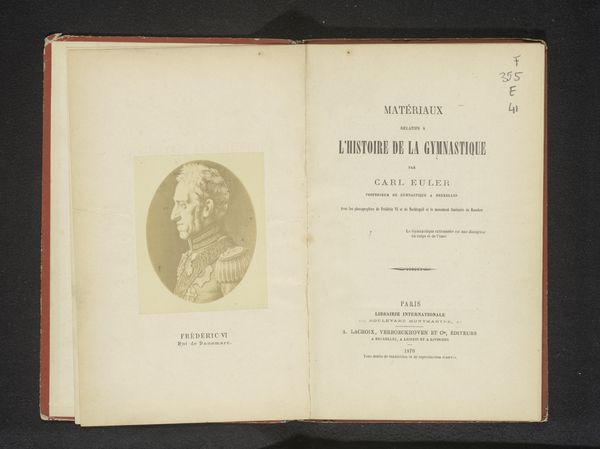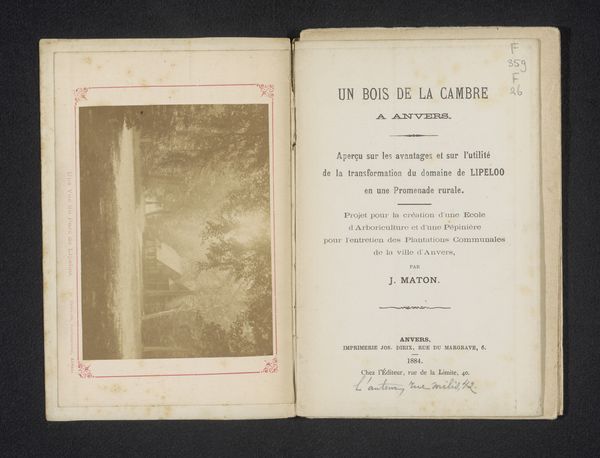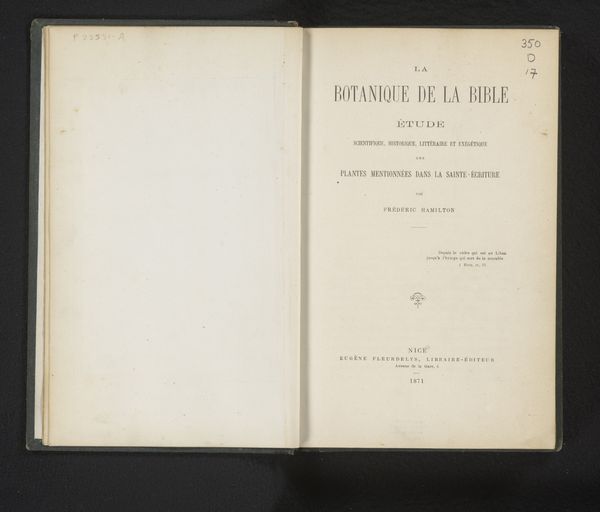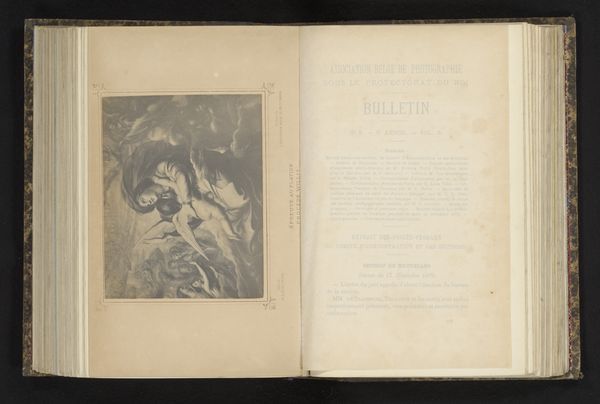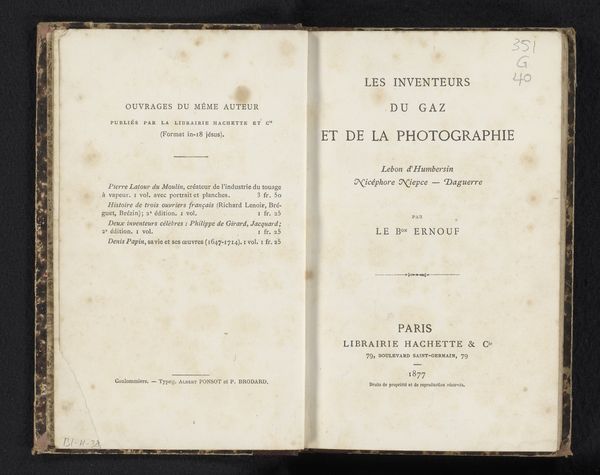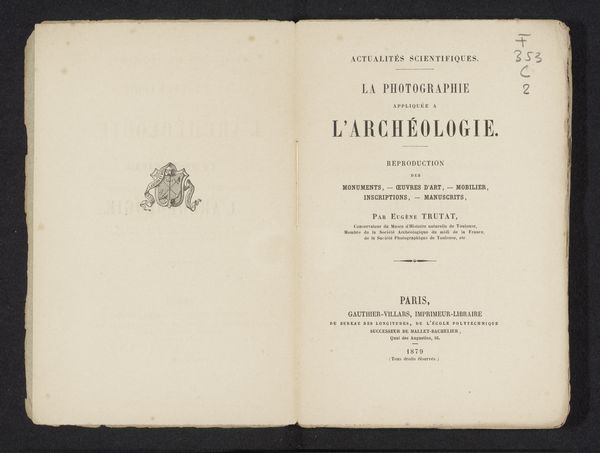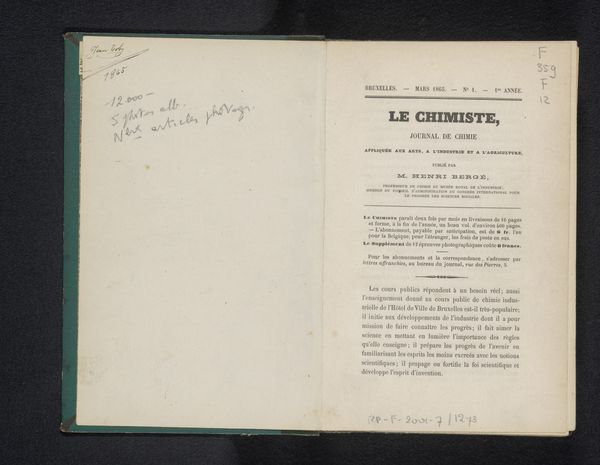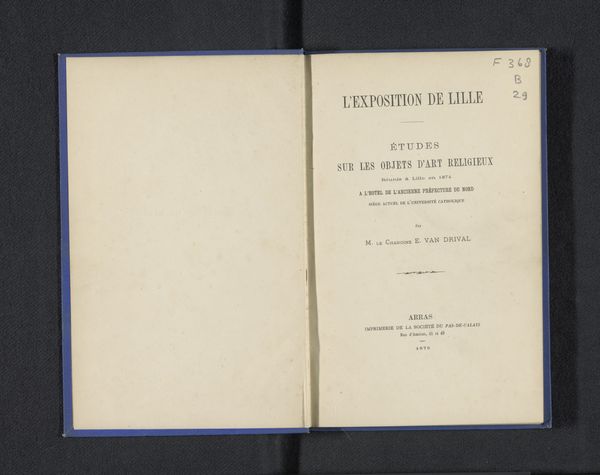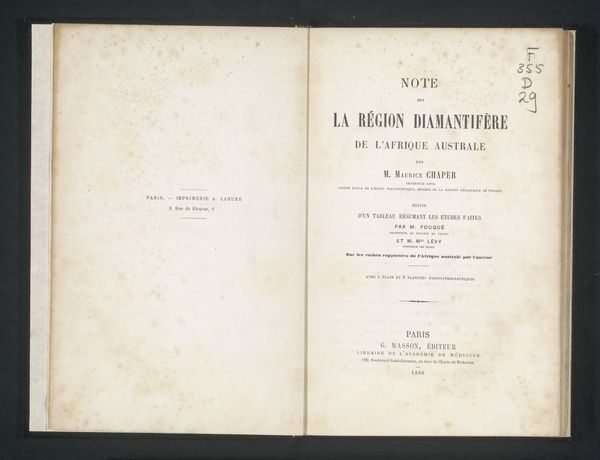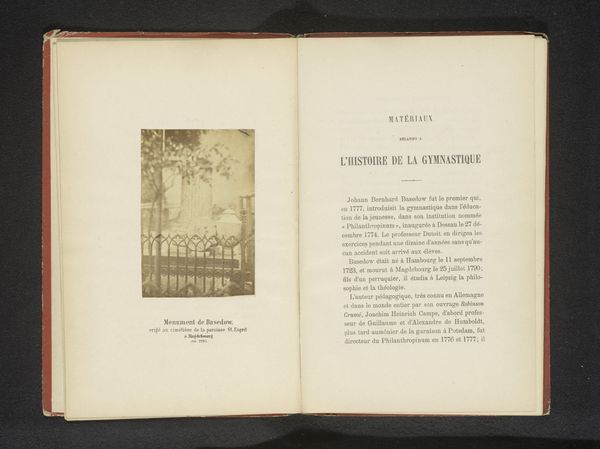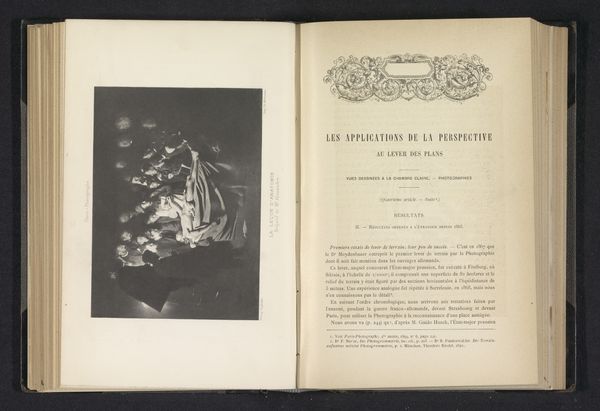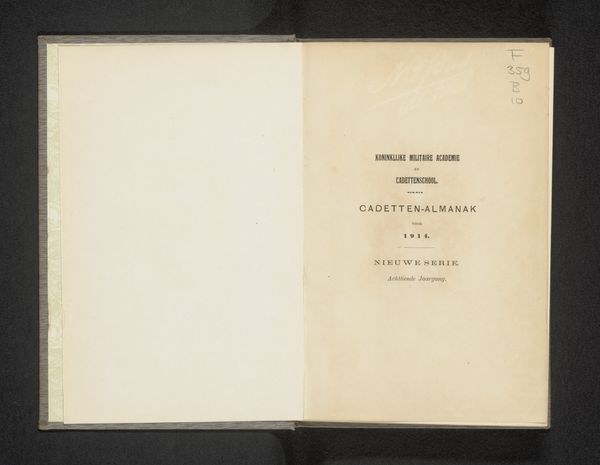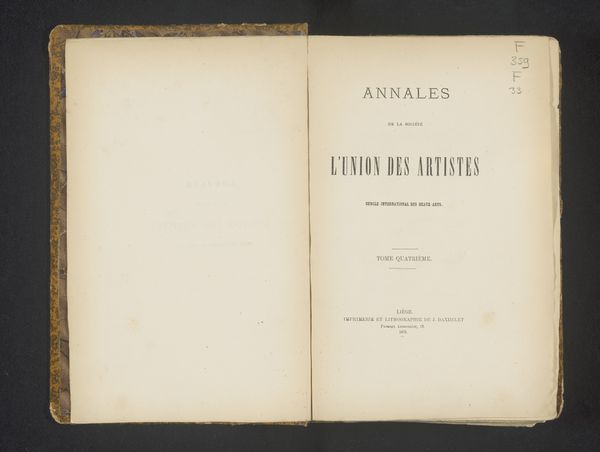
La création et l'oeuvre des six jours / études scientifiques et apologétiques par J.-J.-D. Swolfs 1889
0:00
0:00
# print
#
book
Dimensions: height 215 mm, width 150 mm, thickness 20 mm
Copyright: Rijks Museum: Open Domain
Curator: Standing before us is an opened book from 1889 by J.-J.-D. Swolfs titled "La création et l'oeuvre des six jours", roughly translating to "The Creation and the Work of Six Days," presented as both scientific and apologetic studies. What strikes you most about it? Editor: The immediate impression is somber. A faded monochrome print faces a title page dense with typography. It suggests a heavy intellectual atmosphere, a kind of Victorian earnestness around harmonizing faith and nascent science. Curator: That blend is key. Apologetics in this context refers to a defense of religious doctrine through reasoned argument. Note the printer's emblem, a beehive wreathed in Latin— "Labor improbus omnia vincit," roughly, "relentless work conquers all". This evokes industry and divinely sanctioned human enterprise. Editor: The emblem feels indicative. The Industrial Revolution was in full swing. It raises questions of how such publications participated in debates of faith amidst a changing world shaped by progress. How did theological discourse utilize scientific methodologies to reassert narratives? Curator: Precisely. The book becomes a battleground, an attempt to reconcile perceived challenges to biblical accounts with contemporary geological or biological understandings. Notice "quatrième édition, entièrement revue et augmentée"— this is the fourth edition, fully revised and augmented, indicating an evolving dialogue. Editor: That evolution interests me. It reveals public reception. Who was this text aiming to convince? Clergy seeking to maintain doctrinal authority or perhaps lay readers grappling with evolutionary theory or a bit of both? Curator: The text had implications within the socio-political contexts. These attempts at integration underscore not just faith but also institutional power, and Swolf's work aimed to reinforce faith's authority in that rapidly changing world. It represents a complex attempt to harmonize belief systems in an age defined by scientific progress, as much social as religious. Editor: The weightiness makes sense, both in design and implication. Considering how religion responded to disruptive, world changing concepts interests me from our own present context too. It holds a fascinating conversation about our world views, where then, where now, and potentially for times to come.
Comments
No comments
Be the first to comment and join the conversation on the ultimate creative platform.
